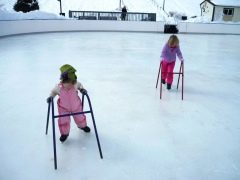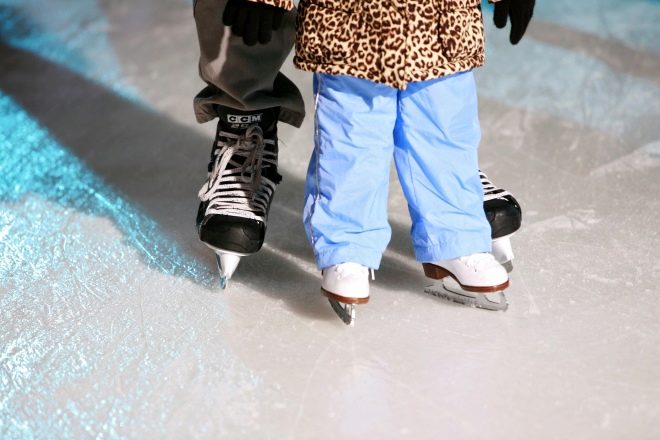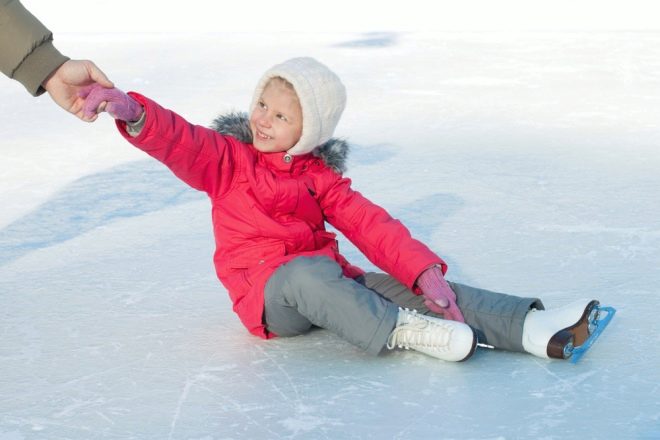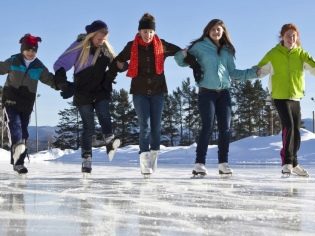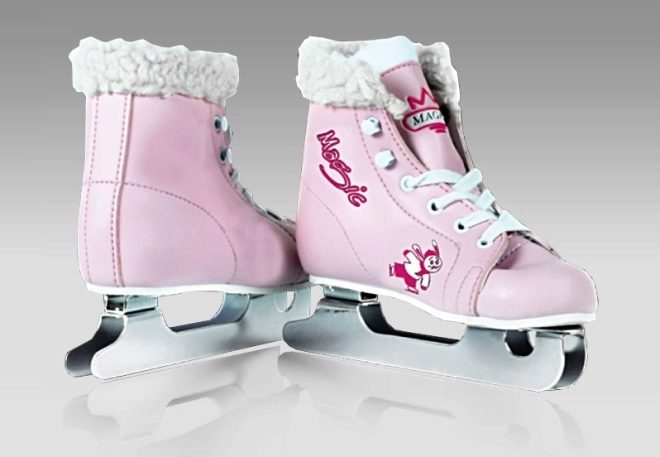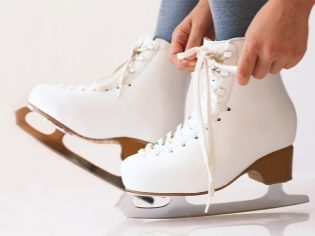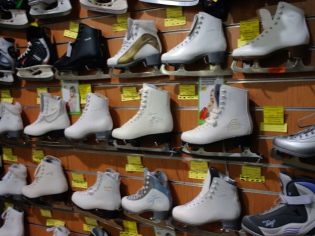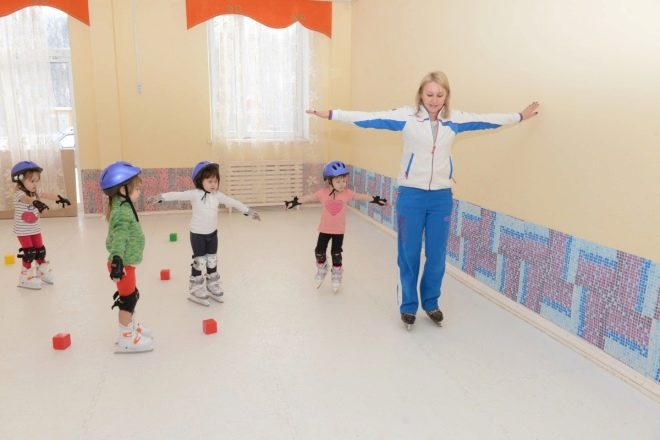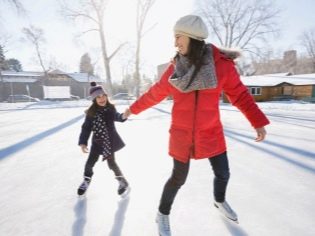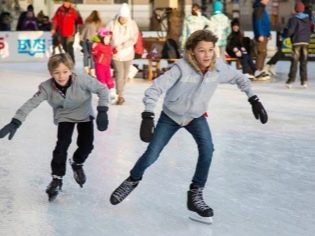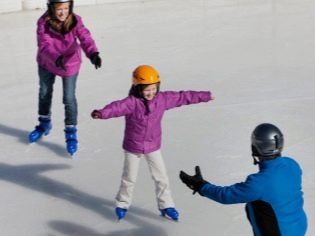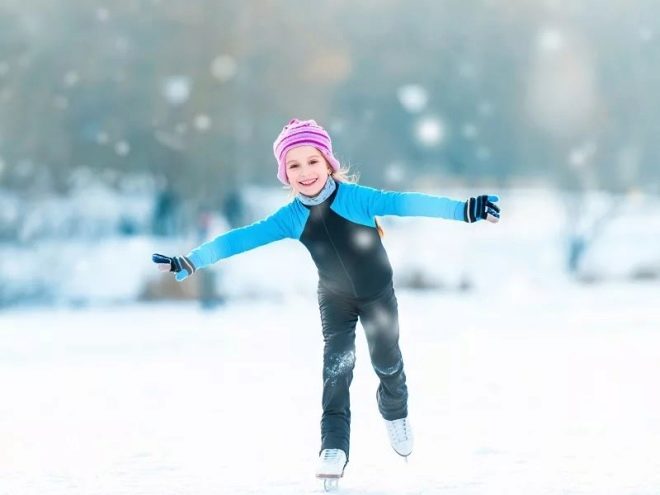How to teach a child to skate?
Most parents are interested in their child being involved in a healthy and active lifestyle. In this regard, the question arises, to what kind of sport to attach your child. It is no secret that physical activity in the fresh air strengthens the immune system and helps to increase the body's endurance. That is why you can often meet young parents with a child at the rink. How to help your child get on skates and how to choose the right clothes for training can be found in this article.
When can I take my baby to the ice?
A tiny baby, moving in ice with small awkward little steps, can cause affection in everyone on the rink. However, the age restrictions for classes in ice palaces have not been canceled. Specialists from medicine advise not to put girls on skates until they are 4 years old. This is due to the fact that an actively developing children's organism before this age is simply unable to adequately perceive the physical exertion that parents offer him by putting on skates. Such a situation can excite many, as everyone knows hockey players and skaters, who first appeared on the ice in 3 or even 2 years.
It is worth noting, however, that such examples are exceptional, and not fundamental, because for confident riding and ice skating and performing elementary exercises, the child should have:
- formed muscle corset;
- decent coordination;
- personal interest in learning.
According to the professional opinion of doctors, these signs can be formed in a child only by 4-5 years old. Removing the baby on the ice surface at an earlier age sometimes provokes injuries, impaired bone growth, stretching of muscle fibers, inhibition of development and growth of the body, as well as a lack of interest in further activities. Ice training promote immunity through hardening and a variety of physical exercises.
It is in connection with this that there are cases when the doctor recommends that you start attaching your baby to slow skating a little earlier.
A good example is the situation with Evgeni Plushenko, the famous figure skater and winner of many medals and titles at the international level. In early childhood, he had severe pneumonia, after which the doctor advised his mother, Eugene, to take several classes in the ice palace to strengthen the boy's weak body. Classes on ice so impressed by the young Eugene, that he chose figure skating as a matter of his life, his profession.
In order for a baby to become a professional athlete, it is necessary to take into account age. To give it up for training on the ice at the age of seven will be too late, as the age of champions on the ice is short, and you need to learn good skating for a long time.
Clothes for skates
For the first training session, it is recommended to give preference to a skating rink with good ice. To do this, you need to choose clothes for the child, which will provide him with warmth, not constrain or make heavier the movement. For example, it can be a cotton T-shirt on a naked body, which allows the skin to breathe, a T-shirt (preferably not synthetic, as it can create a greenhouse effect), a warm sweater and a windbreaker. In the absence of the opportunity to get on the indoor rink, it is recommended to wear two or three thin sweaters and a warm jacket.If the child starts to complain that he is hot - it is advisable to take off only a sweater, while putting on a jacket back.
As for the bottom of the clothes, the trousers should be chosen in such a way that the saddles are free enough and do not constrain the movement of the baby. Excessively wide leg will not allow the child to carry out sweeping movements, as there is a high probability of becoming entangled in them. A prerequisite is to provide the child with protective equipment, such as elbow pads and knee pads. We will return to the latter. And before we pay attention to the main aspect, without which classes on the ice are impossible - to skates. There is an opinion that Fifty percent of the successful mastering of the art of skating on ice by a kid is given to properly chosen skates. And one can not disagree.
When purchasing skates, be sure to pay attention to several factors.
- Foot size. In no case do not get the child skates "for growth". This could cause injury. The shoes, which are chosen close to each other, can also cause injuries and will inevitably rub the toes of the child. The best option would be to purchase the shoes that fit perfectly on wool socks. It is in them that your child will attend classes.
- Direction. Depending on the direction in which you see your baby, and should be chosen shoes. For example, if you are counting on the fact that your kid will become the future star of the National Hockey League, then the skates are better to choose hard ones from rough material. For figure skating or just having fun - give preference to skates with boots made of leather. Most of these shoes are made of artificial leather, their insulation is carried out using faux fur. For regular workouts you need to try to buy shoes from natural materials.
- Blade. For a child who only knows the basics of skating on ice, you need skates with carefully sharpened and short blades.
If financial opportunities allow, it is best to purchase a thermal version of the skates. This is a special type of equipment, thanks to which shoes take the form of a foot under the influence of the temperature regime of the body. It is worth noting that such skates have a rather high cost.
Protecting the elbows of the child from injuries and bruises is another important aspect that you should pay attention to. Since the fall of the baby at first is unavoidable, it is necessary to minimize the chance of injury in this area. Elbow pads are used for this. The difficulty of their choice is that they do not hang around the elbow and at the same time do not constrain the movement of the hand.
Cups of elbow pads will reduce discomfort during a fall and save elbows from abrasions and bruises.
First training
Before your child is on the ice surface, do a little warm up on your entire body. A few squats and jumps on the rope serve as wonderful exercises for warming up all the necessary muscles for further training. For the very first exit to the rink, it is advisable to find a place where a small number of people are concentrated. The first lesson is more informational, do not immediately require the child to exercise. Give him the opportunity to experience the first skating slip and confidence in his legs.
So it will be much easier for him to overcome the fear of falling, which one will inevitably have to face during the next training sessions.
Your main task is to interest the child, to show him that skating is great and useful. A clear example will serve a few simple steps.
- Take a ride on skates yourself, but for the kid to see you.
- Clearly show the elements that you plan to teach the child.
- Call the baby to you. It is imperative that he make the first journey himself.Do not walk a long distance from him, perhaps your child is afraid of falling, which is quite natural. Even a small distance, but passed by yourself, will instill confidence in the child, which will greatly facilitate further training.
The first thing that is worth teaching the child is to keep balance and to fall correctly. For the first aspect it is necessary to master several techniques.
- Arrange the foot so that they do not go beyond the width of the shoulders.
- Keep your knees slightly bent.
- Socks stop slightly twist in different directions.
- Align the width of the legs so that they are level with the shoulders.
- Arms should be slightly bent at the elbow. They play a key role in the development of the baby balance. While riding, make sure that your child holds hands at right angles to the body.
Try to explain to your child that falling on the rink is absolutely natural and should not be resisted. Tell him that in case of a fall, it is necessary to fall “correctly”, this will reduce the risk of any serious injuries. There are several techniques for training falls, which also need to be learned at the first lessons on the ice.
- To begin with, group the body, stretch your arms, bend your knees and turn to the side.
- Kneel down and rest in the palm of your hand.
- Expose one leg so that the blade of the skate is on the ice and lean on the knee of the same leg with your hands.
- Push your body forward.
- Do not forget that when a child falls, it must learn to push the handles forward.
Skating elements
There are several exercises that will make skating more varied and exciting, but at the same time help your child learn the necessary skills. The following elements are easy to learn, so you can start them immediately after the child learns to stand confidently on the ice.
The element is called herringbone. The element got its name thanks to the tracks left on the ice after the blades of the skates. So, the child must place the foot of the left or right foot (depending on which foot is the guide) diagonally and with the inside of the blade of the other foot push off. The movement of the guide foot should be smooth and slightly diagonally directed. Then change the leg and repeat the repulsion.
After several successful repetitions, the baby can try to make a “Christmas tree” without stopping.
A useful element is the “slowdown”. This technique will allow your child to learn how to control the speed with which he moves on the ice. This technique should be used in cases where urgent need to "reset" speed. During the ride, teach your baby to spread and pull legs together. When mixing the legs, you need to lean slightly on the heels. This is how speeding occurs.
Perform this exercise slowly. It is quite laborious and at first can cause fatigue in a child. Explain to the child that when performing the exercise, the muscles of his legs are reduced and thereby strengthened, making them stronger and more enduring. This technique allows you to avoid all sorts of collisions, which are also inevitable on crowded skating rinks, like falling. In most cases, ice skating causes a great surge of energy and joy in children, and curiosity will only encourage your child to learn this healthy and useful skill.
Learn more about how to teach your child to skate, you will learn from the following video.
